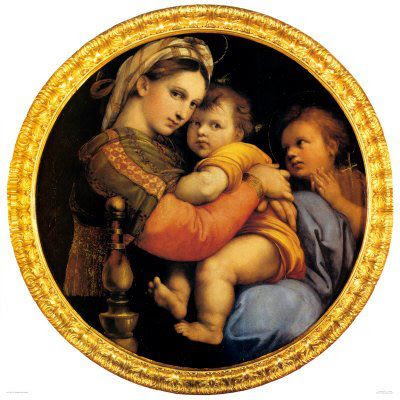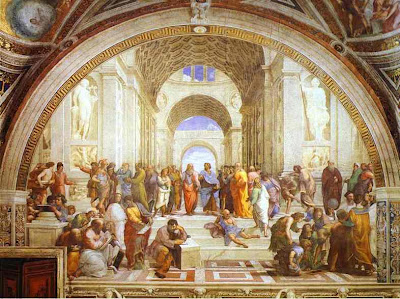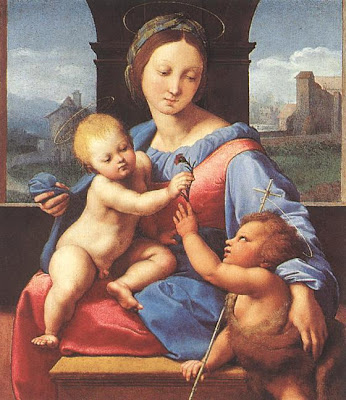Raphael is one of my favorite artists and I am very excited to introduce you to some of his extraordinary works. I do not want you to his biography, because there are many on the net about his life and his works. I just want to tell you what strikes me most of his career as an artist and that few people know.
Raffaello Sanzio da Urbino (1483 – 1520), better known simply as Raphael, was an Italian painter and architect of the High Renaissance. His work is admired for its clarity of form and ease of composition and for its visual achievement of the Neoplatonic ideal of human grandeur. Together with Michelangelo and Leonardo da Vinci, is one of the three great masters of that period.
Raffaello è uno dei miei artisti preferiti e mi emoziona molto presentarvi alcune delle sue straordinarie opere. Non voglio farvi la sua biografia, perchè in rete ci sono molte notizie sulla sua vita e le sue opere. Voglio solo raccontarvi quello che mi colpisce di più della sua attività di artista e che pochi conoscono.
Raffaello Sanzio da Urbino (1483 – 1520), meglio conosciuto semplicemente come Raffaello, è stato un pittore e architetto italiano del Rinascimento. La sua opera è ammirata per la sua chiarezza formale e la semplicità della composizione e per la sua realizzazione visiva dell’ideale neoplatonico della grandezza umana. Insieme a Michelangelo e Leonardo da Vinci, è uno dei tre grandi maestri di quel periodo.
Raphael was enormously productive and despite his death at 37, a large body of his work remains. Many of his works are found in the Vatican Palace. He was extremely influential in his lifetime.
Vasari says that Raphael eventually had a workshop of fifty pupils and assistants, many of whom later became significant artists in their own right. This was arguably the largest workshop team assembled under any single old master painter, and much higher than the norm. They included established masters from other parts of Italy, probably working with their own teams as sub-contractors, as well as pupils and journeymen. We have very little evidence of the internal working arrangements of the workshop, apart from the works of art themselves, often very difficult to assign to a particular hand.
Raffaello era enormemente produttivo e nonostante la sua morte a soli 37 anni, ci rimangono un gran numero di opere. Molte opere si trovano nel Palazzo Vaticano. Egli è stato estremamente influente nella sua vita.
Vasari dice che Raffaello aveva un laboratorio di cinquanta allievi e assistenti, molti dei quali in seguito divennero artisti significativi. Questo è stato probabilmente il più grande laboratorio organizzato da un singolo maestro pittore, e di molto superiore alla norma. Tra essi vi erano anche maestri affermati provenienti da altre parti d’Italia. Noi abbiamo poche prove delle modalità di lavoro interne del laboratorio, a parte le opere d’arte in sé e spesso è molto difficile assegnare un’opera a un artista particolare.











